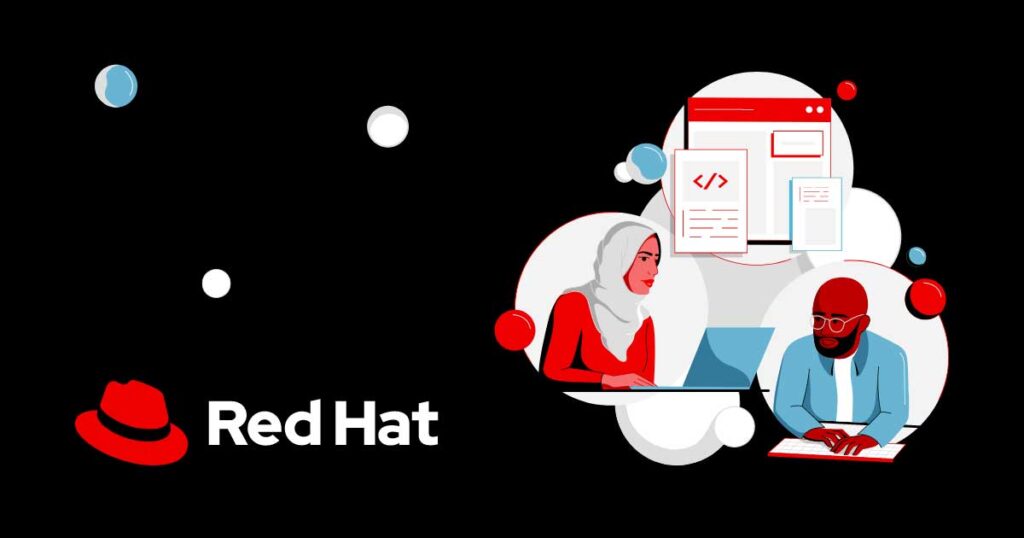Artificial intelligence (AI) is one of the most transformative forces in today’s economy, but its adoption story is still being written. A recent article in The Economist questions the assumptions behind AI’s growth, particularly the belief that increased efficiency will automatically lead to greater demand. It challenges what some tech leaders have recently embraced to explain and justify AI’s rise: the Jevons paradox. This economic concept suggests that as AI becomes cheaper and more efficient, we won’t use it less—we’ll use it everywhere. While rebound effects like this do happen in economics, the article argues that a complete Jevons paradox scenario, where efficiency leads to a higher overall usage, is rare.
Inspired by that discussion, I want to explore a broader perspective: how certain economic and behavioral theories shape the way we think about AI adoption and how Red Hat’s AI strategy fits into the picture.
A theoretical approach to understanding the technology adoption lifecycle
Every major innovation, such as electricity, the internet and smartphones, follows the same technology adoption lifecycle curve. First come the innovators, then the early adopters and eventually, the early and late majority.
Right now, AI is still early in this cycle. That’s not surprising—in fact, it’s exactly what the early adopter phase looks like. I’ve seen this happen many times at Red Hat. Whether it’s customers experimenting with machine learning (ML) or looking to bring inference into production, early adopters are eager but cautious. They’re still validating use cases, assessing architectures and figuring out how to integrate AI into their workflows—classic early adopter behaviors.
But here’s the key: It doesn’t mean AI won’t become a standard part of the enterprise stack. It just means we haven’t crossed the chasm yet. When we do, things will accelerate fast.
Anchoring bias: early impressions that stick
So what’s holding us back from that turning point? Anchoring bias is part of the story. A lot of organizations still anchor their perception of AI on the earliest, most expensive and complex models (think of the large transformer models requiring huge infrastructure). That initial impression doesn’t go away easily. Even though more efficient, open and specialized AI models, such as DeepSeek, are emerging, many organizations still view AI as “too big,” “too experimental,” “too expensive” or “too enterprise.” Until we challenge that perception, broader adoption will remain out of reach.
DeepSeek and the moment of induced demand
That’s where breakthroughs like DeepSeek come in—representing a moment of Induced demand. As AI becomes more efficient and affordable, it won’t just serve existing use cases more cheaply, it will lower the barriers to experimentation and unlock new use cases altogether—from customer service and content creation to healthcare, intelligent automation and AI at the edge. This will be the momentum to push AI from early adoption to mass adoption.
The availability heuristic
The availability heuristic helps explain how this momentum builds. Once people start seeing real-world examples of AI working—especially efficient, targeted cost-effective AI—the perception of AI shifts. It’s not a tech demo anymore; it’s a tool people actually use. The more visible and practical it becomes, the more organizations will feel like they need to get on board.
The Paradox of Choice
However, even as AI gets cheaper and more accessible, there’s a risk of bottlenecks in decision-making, leading to the Paradox of Choice. Too many frameworks, vendors, architectures and use cases can paralyze decision-makers, especially those outside the engineering core. It’s not just about supply and demand—it’s also about clarity and confidence in execution.
From theory to action: how Red Hat simplifies AI adoption
The power of community acceptance in AI adoption
As AI gains traction, organizations look for guidance to make informed choices, often focusing on trusted tools, active communities and expertise that is accessible. While the most visible tools attract early attention, Red Hat focuses on long-term viability. Red Hat doesn’t just follow trends—it helps shape trends into real-world technologies that can support business-critical environments. In an ecosystem powered largely by open source, teams want to build on what’s already proven to work. But as the ecosystem expands, so do choices, making it harder to know what comes next. Fortunately, community acceptance helps guide adoption and point teams in the right direction.
Delivering platforms that meet people and data where they are
This is where Red Hat’s AI strategy makes a meaningful difference—and it’s something I’ve come to deeply appreciate in my work. In conversations with customers across industries, I’ve seen how excitement about AI is often matched with hesitation. The technology is powerful, but the implementation path is not always clear.
That’s why Red Hat’s approach resonates so strongly. We don’t just provide infrastructure—we provide clarity in a landscape that’s increasingly noisy and complex. Our focus on open, hybrid and flexible architectures helps remove the friction that slows down AI adoption. Through platforms like Red Hat AI, we offer streamlined, opinionated solutions that work consistently across environments—from the datacenter to the edge.

Building the open AI ecosystem
Our strategy goes beyond platforms. Red Hat is building an open, modular AI ecosystem designed to give organizations the freedom to innovate—without the limitations of vendor lock-in or the chaos of managing disconnected tools. Rooted in our foundational values of interoperability, transparency, freedom and community-driven collaboration, our ecosystem supports everything from open model hubs like Hugging Face to widely used frameworks such as PyTorch and TensorFlow. We work across the hardware and software stack to abstract the complexity of AI deployment, orchestration and scaling.

In a world where the Paradox of Choice threatens to slow innovation, Red Hat helps teams reduce the overhead of evaluating and integrating countless tools. We offer an opinionated, curated and security-focused enterprise-grade foundation rooted in open source. We reduce complexity and accelerate time to value and shift the focus to delivering real business outcomes. In that sense, our ecosystem isn’t just open—it’s orchestrated for impact.

MLOps meets DevSecOps: turning models into experiences
AI models are just one part of the equation—the real experience comes from applications enhanced with AI capabilities. While Red Hat AI provides the foundations for building and serving models, Red Hat OpenShift, as a platform, ties it all together by enabling developers to integrate AI models into production-ready applications using CI/CD pipelines, GitOps workflows and DevSecOps practices. It’s where application development and AI operations come together to deliver intelligent, scalable experiences.

Final thoughts: beyond the paradox
Building the future of AI won’t depend only on supply and demand. It will be shaped by creating the right conditions: ecosystems, trust, usability and opinionated design that favor adoption and real-world success.
The Jevons paradox offers a clever economic metaphor, but when it comes to AI, it is only part of the story. Efficiency matters without a doubt, but it isn’t the only factor behind adoption, so are usability, flexibility and trust. The future of AI won’t be dictated by reduced costs or economic analogies alone. It will be shaped by how easily organizations can design, build and scale AI across diverse environments.
The future of AI depends on how intentionally we design the tools, platforms and ecosystems that support it. It’s about how we build everything around those efficient models. And those who shape that intent through openness and user-centered architectures will define what comes next. AI today is not a commodity in the same way coal once was. It’s a dynamic, evolving capability shaped by human behavior, infrastructure maturity and community collaboration.
That’s exactly where Red Hat comes in. While others debate theory, we focus on simplifying AI infrastructure, enabling choice and building open ecosystems that move innovation forward. From our work on Red Hat AI to our collaborations across the open source communities, we’re making AI accessible not just for the few, but for the many—across industries, geographies and levels of maturity.
And if there’s one thing I’ve learned from working with open ecosystems and enterprise teams alike, it is that technology only matters when people can actually use it.
“GenAI presents a revolutionary leap forward for enterprises, but only if technology organizations are able to actually deploy and use AI models in a way that matches their specific business needs.” – Ashesh Badani, Senior Vice President and Chief Product Officer at Red Hat

